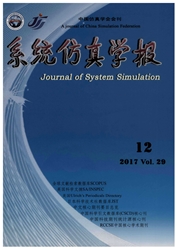

 中文摘要:
中文摘要:
基于对动态交通分配和网络信号控制相互作用的研究,以饱和交通网络为研究对象,建立了动态交通分配和信号控制的一体化双层优化模型。在上层模型中考虑系统最优,进行信号策略的优化,在下层模型中反映用户最优,实施交通网络流的配置。模型中考虑了车辆的实际长度,研究了饱和网络中因为流量饱和而导致的路口排队现象及其对路段费用的影响.最后用实例仿真说明了饱和网络一体化研究的必要性和一体化模型的有效性。
 英文摘要:
英文摘要:
An integrative model of dynamic traffic assignment and traffic control in saturated networks was presented based on the research on the interaction between dynamic traffic assignment and traffic signal control. This model was formulated as a bi-level programming problem. The upper-level problem determines signal settings when minimizing the total system cost, while the lower-level represents a dynamic user optimal variational inequality problem, which optimizes network traffic flow. Especially, the queue delay functions experienced by vehicles at intersections because of saturation were given considering the physical lengths of vehicles. An example was used to test the necessity and validity of the integrative modeling.
 同期刊论文项目
同期刊论文项目
 同项目期刊论文
同项目期刊论文
 期刊信息
期刊信息
